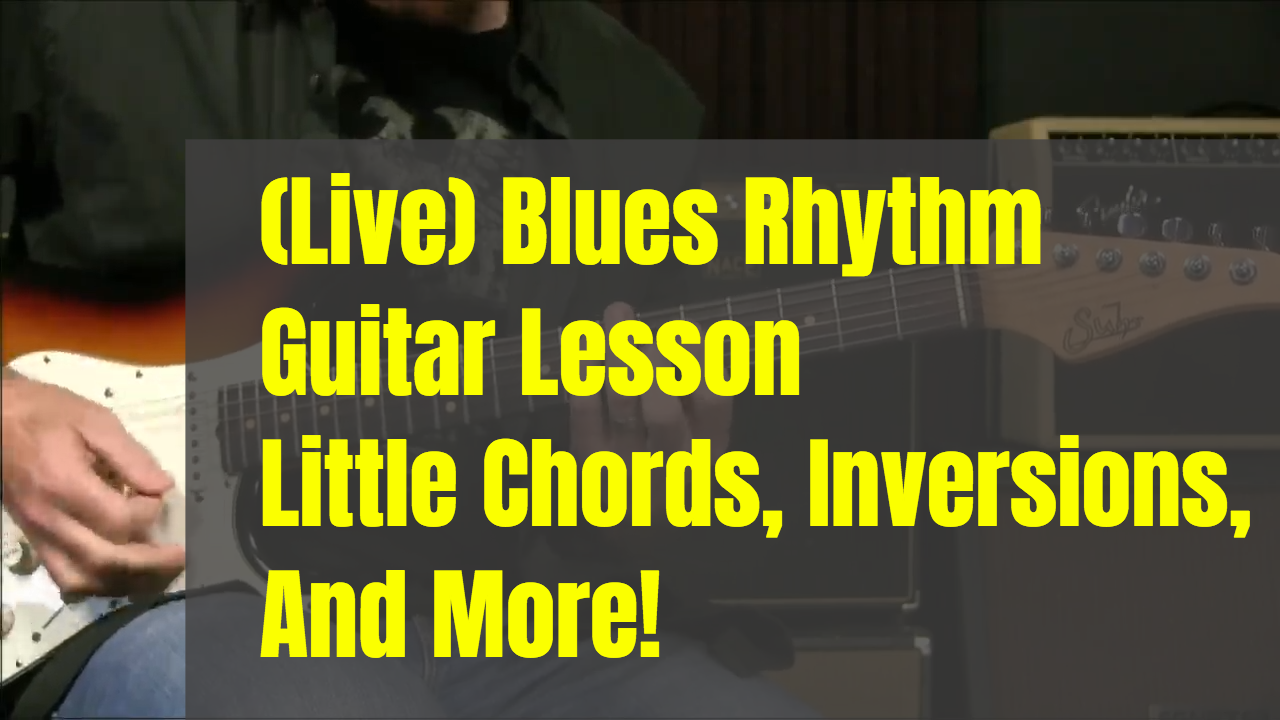A lot folks get stuck playing the same-old-same-old chords and patterns when it comes to blues rhythm playing… but it doesn’t have to be that way.
When you realize that there are only 4 ways to invert a 7th chord (our bread and butter of the blues) and you probably already know 3 of them (you just don’t realize it) then you can actually spice up your blues rhythm pretty quick-like.
So in this video I’ll show you the 4 inversions, and where the ones you probably already know come from so you can just move them… and then we’ll add in the last one and I’ll show you how to practice it.
Easy & Fun – 2 great tastes that taste great together 🙂
In case you need the chord diagrams for these shapes:


20 replies to "More Little Chords & Inversions"
Hey Griff what do you think about the Donner circle looper
Fun lesson, thanks Griff. Hoping I get a looper on Fathers Day to give this a try
gandyman2@btinternet.com
Another great lesson that should keep me occupied for a while. Thanks Griff
Playing single tones, arpeggio or otherwise, out of these four (4) different inversions would appear to provide a good basis for lead playing – like another four (4) note pattern.
Still playing.always fun. Got a new use for my wardrobe. I use it to store some of my guitars. Ha ha. Rock on.
Best wishes
RussC.
INTERESTING AS ALWAYS…MOVEABLE SHAPES…
Yes, I know 3 of them and the 4th is a very common way to play movable 7ths on a ukulele! I like it better with another third on the top string instead of the 5th, though…
I had another thought on this that stems from my comment on Ukulele chords. If you have a 20+ fret guitar, you can play all four of those, but only 3 on a 14-fret and (practically) only two on a 12 fret. You’ll have more luck with G and F, though.
Griff making magic out something that isn’t magical.
EDCAG (CAGED) shapes ! In your diagrams, the first one is E7-shaped, then D7-shaped, then C7-shaped, then A7-shaped. Then the G7 shape would be the same as the last one with the first string note moved down to the 12th fret.
I think anyone interested in mastering these shapes should use Griff’s CAGED exercises and pick a note then play each of these shapes for that note at 60bpm until it’s just second-nature.
Chris G. Happy Valentine’s day everybody (I’m in OZ where it’s tomorrow most of the time, compared to USA).
Did I say that? Sorry, the fourth chord in the diagrams is the G7 shape. I’ll shut up now 🙂
CG
I like how you’ve incorporated the looper pedal into some of you recent lessons.
Makes practice sessions a little more interesting and gets us used to hearing the tones behind the licks or little chords.
Thanks again for making this more fun.
Good perspective on 7th chord inversions, Griff. I’ve got an old Line 6 looper when they 1st came out as the only thing like it in its time. I never really mastered using it. I visited the Forum to see if anyone had posted anything about them but there’s SO many threads about loopers that I couldn’t find anything Line 6 specific. I abandoned the pedal looper when I started using GarageBand to loop, add basslines & percussion to my noodling. Can you see any reason to resurrect my giant Line 6 pedal? The newer ones sure take up less floorspace & seem to do more with less real estate, but being a cheapskate, I’ve been reluctant to spend more money on the same technology. I’d be curious as to what looper pedal you’re using when you make your videos & live presentations. Any comments?
Griff uses a Boss RC-3.
He’s also using an FS-5U footswitch if I’m not mistaken. There are a TON of tutorials covering these on Youtube.
You the Magic thanks you
I’ve been messing around with inversion in the pass but not in that way. I think I will try to do it that way. First I have to buy a ditto looper.
Hi Ken do you need the ditto looper for this lesson (inversions)?
Why?
Looking at a Ditto Looper myself…the small one…you too?
Ben
Nice never thought of inversion this way to aid in tone
Thanks
Some good food for thought…always like the tonal differences…thanks…later.
cowboy